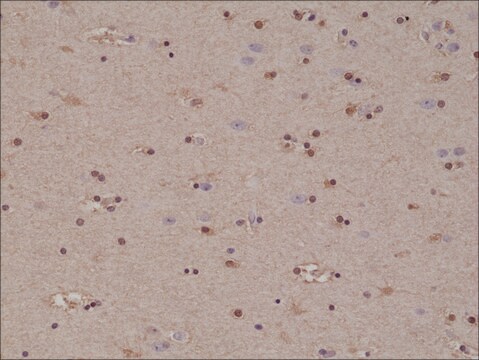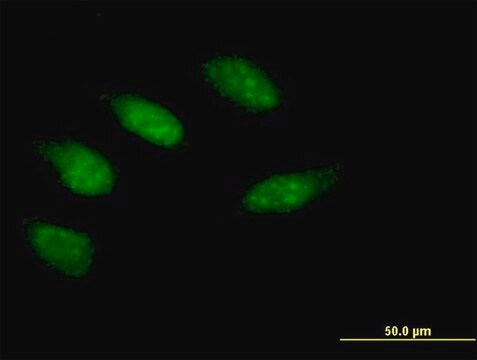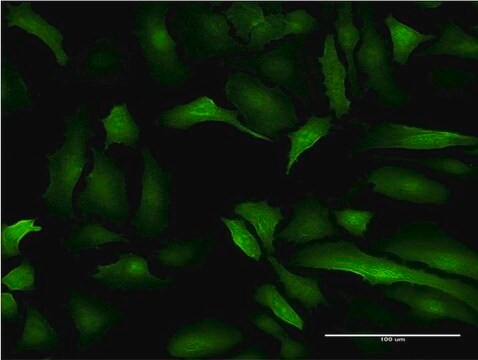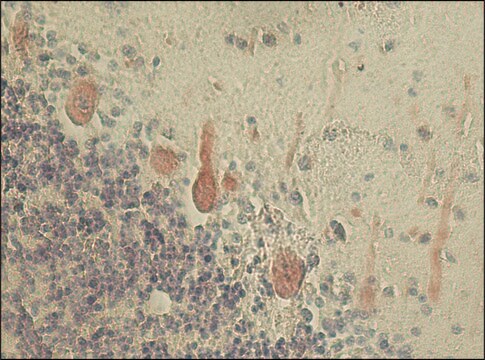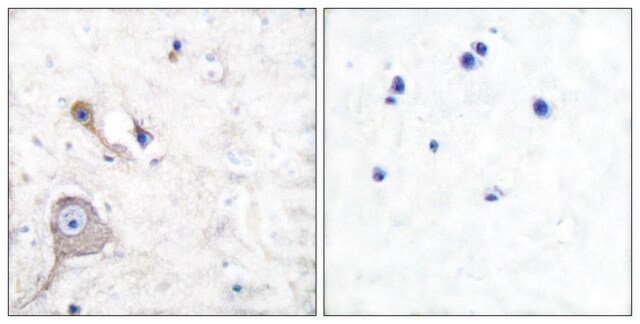Kluczowe dokumenty
S2532
Monoclonal Anti-S-100 (β-Subunit) antibody produced in mouse
clone SH-B1, ascites fluid
Synonim(y):
Anti-NEF, Anti-S100, Anti-S100-B, Anti-S100beta
About This Item
Polecane produkty
pochodzenie biologiczne
mouse
Poziom jakości
białko sprzężone
unconjugated
forma przeciwciała
ascites fluid
rodzaj przeciwciała
primary antibodies
klon
SH-B1, monoclonal
zawiera
15 mM sodium azide
reaktywność gatunkowa
feline, pig, bovine, sheep, goat, rabbit, canine, human, rat
metody
dot blot: suitable using denatured-reduced preparations
immunohistochemistry (formalin-fixed, paraffin-embedded sections): 1:1000 using protease-digested sections of human tongue
indirect ELISA: suitable
microarray: suitable
radioimmunoassay: suitable
izotyp
IgG1
numer dostępu UniProt
Warunki transportu
dry ice
temp. przechowywania
−20°C
docelowa modyfikacja potranslacyjna
unmodified
informacje o genach
human ... S100B(6285)
rat ... S100b(25742)
Opis ogólny
S-100 is a set of small, thermolabile, highly acidic dimer proteins of approximately 20kDa which are widely distributed in different tissues. Dimeric combinations of two chains, the α-chain (93 amino acids,10.4kDa) and the β-chain (91 amino acids, 10.5kDa), form the three known subtypes of S-100: S-100ao (αα), S-100a (αβ) and S-100b (ββ).
Monoclonal Anti-S-100 (β-subunit) (mouse IgG1 isotype) is derived from the SH-B1 hybridoma produced by the fusion of mouse myeloma cells and splenocytes from an immunized mouse.
Specyficzność
Immunogen
Zastosowanie
- ELISA
- Immunofluorescence
- Immunohistochemistry
- Western blotting
Działania biochem./fizjol.
Postać fizyczna
Przechowywanie i stabilność
Oświadczenie o zrzeczeniu się odpowiedzialności
Nie możesz znaleźć właściwego produktu?
Wypróbuj nasz Narzędzie selektora produktów.
Kod klasy składowania
10 - Combustible liquids
Klasa zagrożenia wodnego (WGK)
WGK 3
Temperatura zapłonu (°F)
Not applicable
Temperatura zapłonu (°C)
Not applicable
Wybierz jedną z najnowszych wersji:
Masz już ten produkt?
Dokumenty związane z niedawno zakupionymi produktami zostały zamieszczone w Bibliotece dokumentów.
Klienci oglądali również te produkty
Nasz zespół naukowców ma doświadczenie we wszystkich obszarach badań, w tym w naukach przyrodniczych, materiałoznawstwie, syntezie chemicznej, chromatografii, analityce i wielu innych dziedzinach.
Skontaktuj się z zespołem ds. pomocy technicznej





